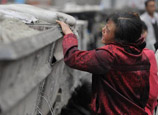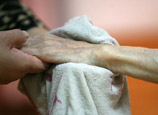
HAVANA, March 13 (Xinhua) -- More than 300 invasive plants are now plaguing Cuba, according to a report released here Wednesday by the official Cuban Institute of Systematic Ecology (IES).
The institute, an organ of the Cuban Ministry of Science, Technology and Environment, identified 323 invasive species existing in the island area, among which the most aggressive is marabou, a kind of shrub introduced previously for decorative purposes.
According to the report, the worst foreign offenders on land include casuarina pines from Australia, rose apple, ipilipil, African tulip and cajeput.
The report added that the worst aquatic invaders in Cuba is water hyacinth, a kind of tropical plant with large blue flowers that could clog waterways.
Ramona Oviedo, an IES expert, said the invasive plants, introduced either intentionally or accidentally, would sometimes have far-reaching and long-term destructive influences on local ecological systems.
Oviedo explained that toxic foreign seeds and species would alter local landscape, affect fauna and flora, soil and water quality, crop yields, forest coverage, and even the operation of dams and waterways.
IES said the second stage of the research on invasive species is scheduled to begin next year.
















 Photo story: Brave young mother in the 4th year of university
Photo story: Brave young mother in the 4th year of university


![]()
